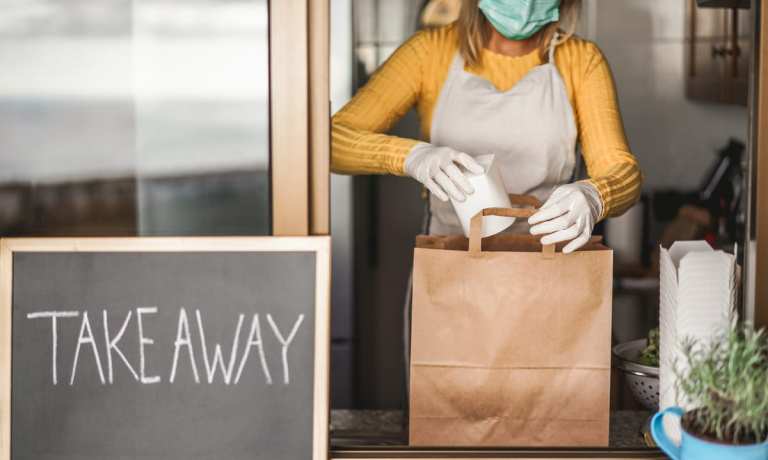
Digital food. Bits for bites, as it were. This is how much of the nation is staying nourished through the unpredictability and fear of the COVID event. While mobile ordering slowed over the summer as a percentage of restaurant sales, expect it to pick back up as winter descends.
Operators that deprioritized digital upgrades to deal with reopening businesses over the summer now have a small window to make system decisions and get ready for uncertainty.
“The pandemic has kicked off-premises sales into high gear, and this trend is forcing eateries to add or improve delivery systems and — in some cases — revamp their physical storefronts,” notes PYMNTS’ November Order to Eat Tracker®, done in collaboration with Paytronix.
“Taco Bell launched its Go Mobile store model, which features drive-thru lanes reserved for customers who place mobile orders, this summer,” the Tracker states, adding that “food industry experts say that investing in store concepts such as these could pay off for restaurants in the future, as many consumers are not expected to return to dining out at the same levels they did before the health crisis.”
COVID Winter Is ‘An Opportunity’
Summer 2020 was a short-lived mini reprieve from the pandemic paces that all restaurants have been put through. Now, it’s important to not let it distract from the mission at hand: survival.
“While many restaurants survived the summer thanks to outdoor seating, a number of our clients found that much of their success is thanks to a shift to digital ordering and a focus on off-premises dining,” Andrew Robbins, CEO at Paytronix, told PYMNTS. “Brands need to recognize that this shift to digital ordering is permanent. We aren’t going back to a world in which just 10 percent of orders come in through the web. We’ve trained our guests to interact digitally and they’ll continue to do so. With the onset of winter, we will see an even higher reliance on online ordering due to the loss of outdoor seating” amid renewed COVID concerns.
Robbins calls this “a chance for brands to get to know their guests even better by taking full advantage of CRM systems and running deep, AI [artificial intelligence]-driven analysis of purchasing patterns. This can lead to long-term changes, like data-driven subscription programs that further cement the relationships between brands and their guests.”
The November Order to Eat Tracker® also foresees a bump of up to $136 million in the online food delivery sector this year, as “voice ordering, self-service kiosks, drive-thru and contactless mobile ordering continue to grow. One recent survey revealed that 45 percent of customers miss dining out, however, making it essential that restaurants boost safety measures and craft promotions tailored to each consumer if they wish to capture dine-in business.”
Food Loyalty Takes To The Cloud
Partnerships arising from this period in American life and business are among the most fascinating and potentially powerful as at any time before. Paytronix was at the center of one such COVID-era deal, announcing its deal with Oracle Software to take OTE to the next level.
“Many food industry players are working together to unveil ordering and payment innovations that meet customers’ expectations for seamless service across multiple channels. Restaurant loyalty program provider Paytronix recently partnered with software firm Oracle on a software initiative allowing eateries and retailers to adopt the latter’s MICROS Simphony system, a cloud-based point-of-sale (POS) platform for online ordering and contactless delivery,” per the latest Order to Eat Tracker®. “Paytronix said the integration will allow digital menus and orders to flow into the POS so that kitchen staff can swiftly and accurately prepare meals. The program also enables customers to make contactless payments.”
The Paytronix Order & Delivery platform leverages Oracle’s POS to automatically pull and provide information such as inventory updates and store hours. The integration also enables restaurants using Oracle’s platform to expand curbside pickup and contactless payments.
It’s the latest in a string of innovations streaming out of the restaurant tech sector as American dining engineers its way to sustainable new post-pandemic business models.